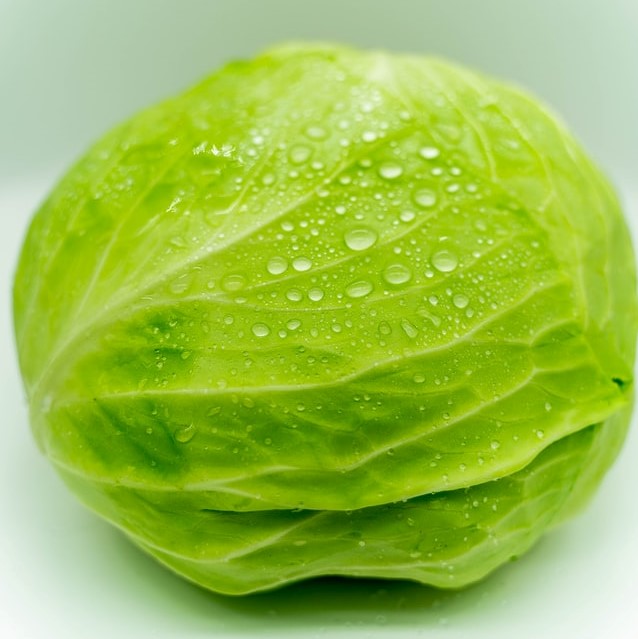Hi,
so I was talking to my Mum and asked her if she would be willing to make whole sour cabbage next year. And she said that I should make it myself. And then I asked her for the recipe and she said there is none. You just make it. After a while of talking to her we managed to mangle up a recipe and the procedure. So I will try to make some this year. This should be my great grandma’s recipe/procedure. My grandma does a wonderful sour cabbage, and we always enjoyed it over the winter. It was a delicious winter ingredient for cooking. There are a lot of wonderful recipes you can make with it. She would ferment it in heads, and we would chop it when necessary. But this way we can make both recipes that need leaves and those that need it shredded.
Ingredients for whole sour cabbage
Cabbage
Salt
pepper corns
bay leaves
water
The measures here are vague because it is one of those ancient recipes that everybody makes by feel. So I will try to make it as well. I vaguely remember how it needs to look like, so this will be fun… A road to discovery starts with the first step.
Step 1
Clean the cabbage and remove its core. You can also half some of them and quarter as well. Just make sure to remove the cores.
Step 2
Start layering first layer of the cabbage.
For the whole cabbages, put the salt into the hole in the base of the cabbage head (the place where core was) until the hole is completely filled up. Then put the cabbage into a clean container with the cabbage base (salt filled hole) pointing up.
For the cabbage halves, rub them thoroughly with salt. So they are nicely salted, then squeeze them between the whole cabbages.
For cabbage quarters, rub them thoroughly with salt, and squeeze them into the remaining holes.
Grandma Zlata
Make sure that you pack the cabbage very well. There should be as little air between them as possible. If necessary you can shred a couple of them and pack the shredded cabbage into the holes.
Step 3
Take a handful of salt, and salt the first layer of cabbage. Then take some pepper corns (Mum just said some pepper corns) and some bay leaves (yeah I know, the amounts are super precise) and scatter them atop of the first layer of cabbage. Press the cabbages down a bit so that they are firmly packed.
Proceed with the same procedure from the step one, to make a new layer of the cabbage. When this layer is laid, do step 3. And so on and so forth until you container is completely full. Make sure there is enough space on top of the container to add the weight and lid.
Step 4
When you are done with cabbage layers, weigh them down with something (people would clean and boil rocks that they would use as cabbage weights). I asked grandma and she says that she would cover the cabbage with a cheese cloth, then cross two clean boards on top and put the clean rock as a weight on top of those boards. Since the cabbage is salted well and pressured, the juice should squeeze out of it. But to get enough cabbage juice to cover the cabbages completely, you need a large amount of cabbage. In case that you are making a smaller batch then you will need to add some water as well.
Grandma Zlata
Pressing of the salted cabbage releases its juices. You should press the cabbage firmly, but not so hard as to split the heads. You want the leaves to be intact.
Heat up a bit of water (I will start with 1L) and add enough salt to it so it tastes like salty soup. Then leave the water to cool down completely before pouring it in the container with cabbage. You need to make sure that the water completely covers the cabbage.
Cover the container with the lid, and leave to ferment.
Step 5
Leave your cabbage somewhere warm and frost free. If the cabbage is somewhere warm it will ferment fast. If its somewhere cold then it will take a long time. Every couple of days my grandma would wash the cloth to reduce the smell of fermenting cabbage. And after at least 2 weeks the cabbage should turn into sauerkraut. When it is completely fermented, it can be left somewhere cool. She said that if you are not using a cheese cloth that you could simply scum the surface of the water to remove the foam on top.
Conclusion
I love these old time recipes that give no specific amounts. A pinch here, a handful there, some spices… It is always a bit of a trip to the unknown when making them the first time. My grandma gave me some very good tips and also how to make sure that the process is successful. Now we just have to try and see how it goes. Hopefully it will go well, and we’ll be able to enjoy our fermented cabbage for entire winter.
Featured image by: Photo by ibuki Tsubo on Unsplash

